Understanding Brisket Cooking Basics
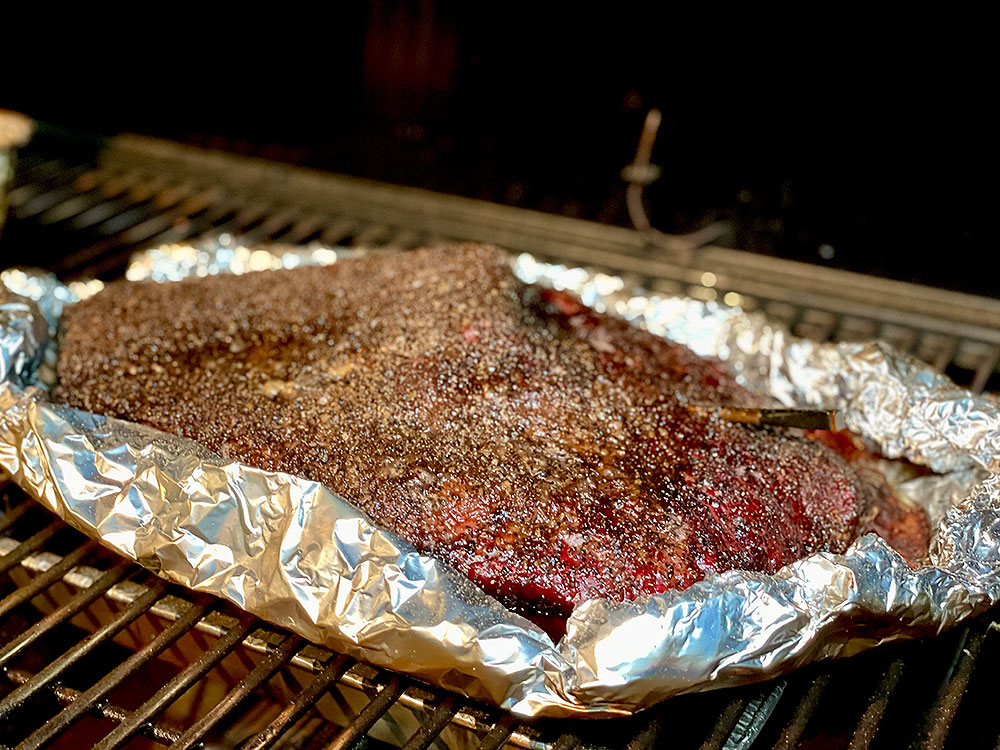
When it comes to cooking brisket, understanding the basics is key to avoiding BBQ disasters. There are several factors to consider, such as the ideal temperature and cooking time. Overcooking brisket can result in tough and dry meat, while undercooking can be risky and lead to foodborne illnesses. Proper preparation, including trimming the fat and seasoning techniques, is crucial for achieving delicious results. Choosing the right wood and smoke level adds flavor to the meat. Whether you’re smoking or grilling brisket, following the right techniques will ensure a juicy and flavorful outcome. Testing the brisket for doneness using a meat thermometer and evaluating its tenderness are important steps. By familiarizing yourself with these brisket cooking basics, you can avoid BBQ disasters and enjoy a perfectly cooked brisket every time.
Factors To Consider When Cooking Brisket
When cooking brisket, there are several important factors to consider for a successful outcome. First and foremost, the quality of the meat plays a crucial role. It’s essential to choose a high-quality cut of brisket from a reputable source to ensure optimal flavor and tenderness.
Another factor to consider is the size and thickness of the brisket. Thicker cuts will require more time to cook thoroughly, so adjusting the cooking time accordingly is important.
Additionally, the type of cooking method and equipment used can affect the cooking process. Whether you choose to smoke or grill the brisket, understanding the nuances of each method and adjusting cooking times and temperatures accordingly is key.
Lastly, the environment in which you cook the brisket can also impact the cooking process. Factors such as altitude, humidity, and outdoor temperature can affect cooking times and temperatures, so it’s essential to monitor and adjust accordingly.
By considering these factors and making necessary adjustments, you can achieve a perfectly cooked and flavorful brisket every time.
Ideal Temperature And Cooking Time For Brisket
When it comes to cooking brisket, achieving the ideal temperature and cooking time is crucial for a delicious and tender result. Generally, the recommended temperature for cooking brisket is around 225-250°F (107-121°C). This low and slow cooking method allows the connective tissues in the meat to break down slowly, resulting in a melt-in-your-mouth texture.
In terms of cooking time, brisket can take anywhere from 1 to 1.5 hours per pound to cook at the low temperature mentioned above. So, for a 10-pound brisket, you can expect it to take around 10 to 15 hours to cook to perfection. However, it’s important to remember that every brisket is unique, and factors such as thickness and fat content can influence the cooking time.
To ensure accuracy, it’s recommended to use a reliable meat thermometer to monitor the internal temperature of the brisket. The ideal temperature for brisket is around 195-205°F (90-96°C). Once the brisket reaches this temperature range, it indicates that the collagen and fat have fully rendered, resulting in a tender and juicy brisket.
Remember, cooking brisket is a slow and patient process. It’s better to err on the side of caution and cook it longer rather than rushing the process and ending up with tough meat. The key is to maintain a consistent and low temperature throughout the cooking process to achieve the desired result.
Common Mistakes To Avoid
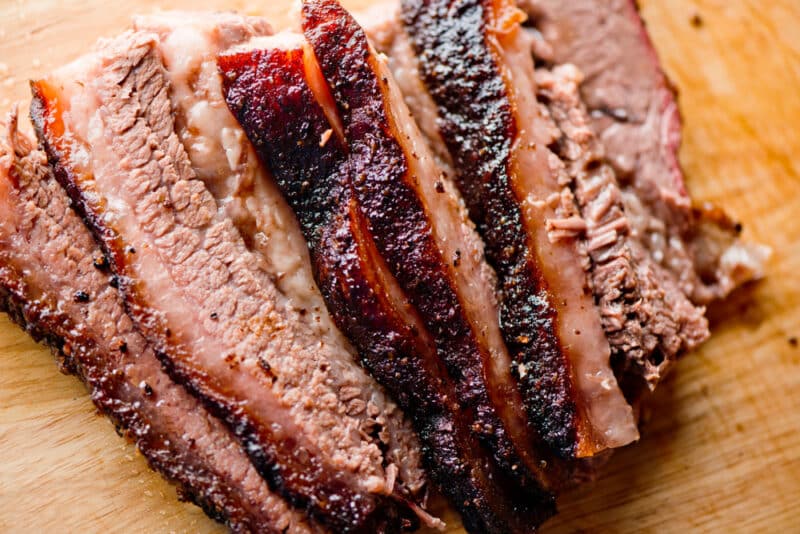
When it comes to cooking brisket, there are several common mistakes that should be avoided in order to achieve the best results. One common mistake is overcooking the brisket, which can result in a dry and tough texture. It’s important to closely monitor the temperature and cooking time to ensure that the brisket is cooked to perfection. Another mistake is not allowing enough time for the brisket to rest after cooking. This resting period allows the juices to redistribute, resulting in a juicier and more flavorful meat. Lastly, using the wrong rub or seasoning can also affect the taste of the brisket. It’s essential to choose a rub that complements the flavors of the meat and enhances its natural richness. By avoiding these common mistakes, you can ensure a delicious and tender brisket every time.
Overcooking Brisket: Effects And Consequences
Overcooking brisket can have negative effects on its texture and taste. When brisket is cooked for too long, it can become dry and tough, making it difficult to chew and enjoy. Additionally, overcooked brisket can lose its natural flavors and become bland. The consequences of overcooking are disappointing results and a less enjoyable eating experience. To avoid this, it is essential to closely monitor the cooking time and temperature, ensuring that the brisket is cooked to the right level of doneness for a tender and flavorful outcome.
Undercooking Brisket: Risks And Solutions
Undercooking brisket poses its own set of risks and challenges. When brisket is not cooked to the right level of doneness, it can be tough, chewy, and even raw in the center, making it unpleasant to eat. This can be particularly problematic for food safety reasons, as undercooked meat may contain harmful bacteria that can cause foodborne illnesses. To avoid undercooking, it is crucial to ensure that the internal temperature of the brisket reaches a safe level of at least 195°F (90°C) for tender and fully cooked meat. Using a reliable meat thermometer and allowing enough time for the brisket to cook properly are essential for achieving the desired results without compromising safety.
Proper Brisket Preparation
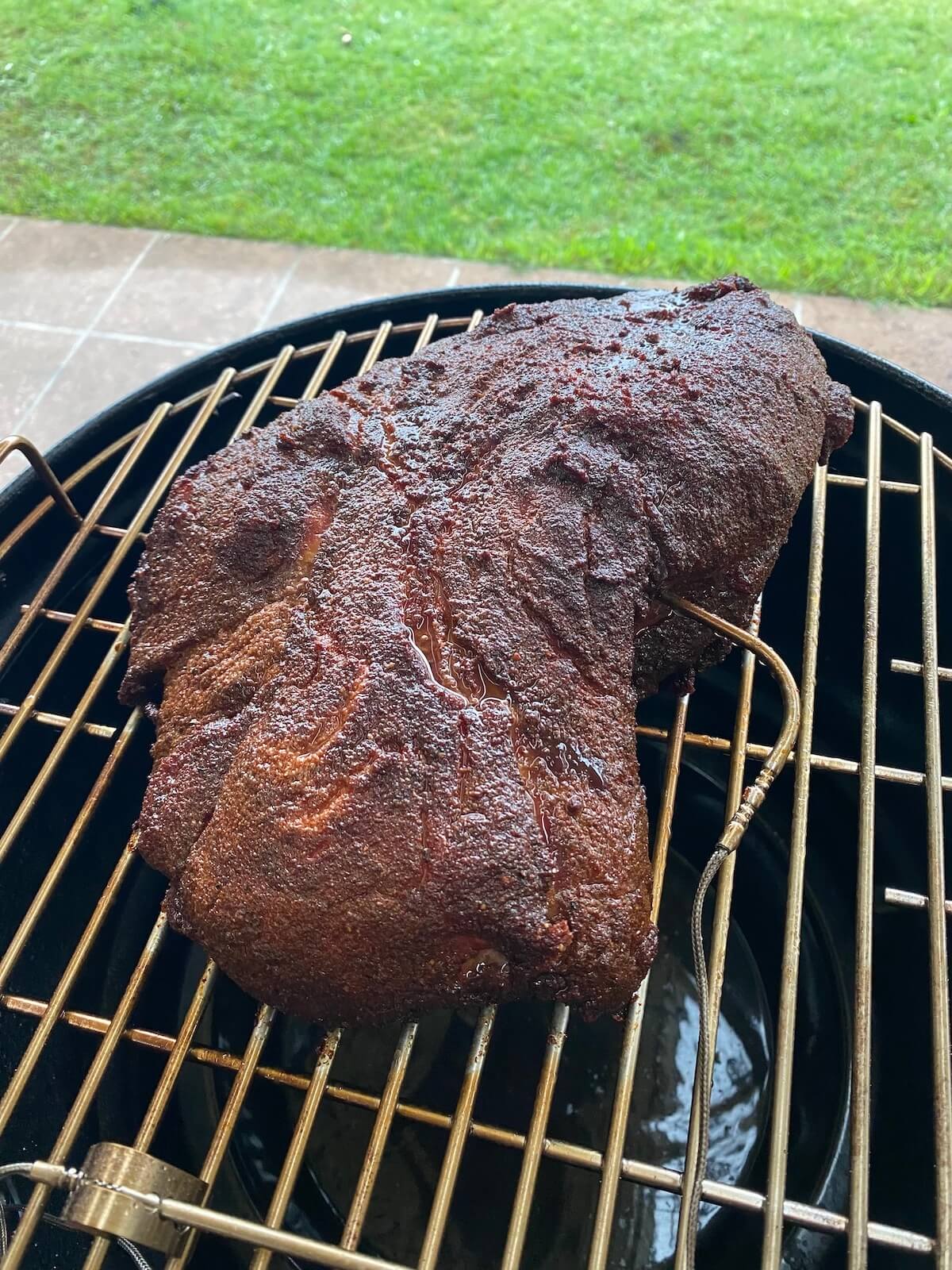
When it comes to preparing brisket, there are a few key steps that can make all the difference in ensuring a delicious and well-cooked result. First, it’s important to trim excess fat from the brisket, as this can lead to an overly greasy and heavy texture. Seasoning the brisket with a flavorful rub or marinade is also crucial to enhance the taste. Additionally, choosing the right wood and smoke level for the BBQ can add a smoky and aromatic element to the meat. Taking these preparation steps will set the foundation for a successful brisket cooking experience.
Trimming Brisket Fat And Seasoning Techniques
Trimming brisket fat is crucial for achieving optimal texture and flavor. Excess fat can lead to an overly greasy and heavy brisket. Start by removing any thick or uneven layers of fat from the meat. It’s important to leave a thin layer of fat to keep the brisket moist during cooking.
When it comes to seasoning, there are various techniques you can try. Some prefer a simple rub of salt and pepper, while others may opt for a more complex blend of spices and herbs. Experiment with different seasonings to find the flavors that suit your taste. Remember to apply the seasoning generously, ensuring it covers the entire surface of the brisket. This will create a flavorful crust when cooked.
Choosing The Right Wood And Smoke Level For BBQ
Choosing the right wood for smoking your brisket can greatly enhance its flavor. Different types of wood impart different flavors to the meat, so it’s important to choose the right one for your barbecue. Commonly used woods for smoking brisket include oak, hickory, mesquite, and fruitwoods like apple or cherry. Each wood has its distinct flavor profile, so experiment with different combinations to find the taste that suits your palate. Additionally, it’s important to consider the smoke level. Too much smoke can overpower the meat, while too little may not provide enough flavor. Find the perfect balance to achieve that delicious smoky taste without overpowering the natural flavors of the brisket.
Brisket Cooking Methods

There are various cooking methods to prepare a delicious brisket. One popular method is smoking. This involves slow cooking the brisket over indirect heat and adding wood chips for that signature smoky flavor. Another method is grilling, which involves searing the brisket over high heat and then cooking it over indirect heat until it reaches the desired doneness. Each method offers its own unique taste and texture, so it’s important to choose the one that suits your preferences. Regardless of the method you choose, the key is to cook the brisket low and slow to achieve tender, juicy, and flavorful meat.
Smoking Brisket: Tips For Achieving Perfect Results
When it comes to smoking brisket, there are a few key tips that can help you achieve perfect results every time. First, make sure you choose the right wood for smoking. Different types of wood, such as hickory, mesquite, or oak, can impart unique flavors to the meat. Next, maintain a consistent temperature throughout the smoking process. Ideally, you want to aim for a temperature range of 225°F to 250°F. It’s also important to monitor the internal temperature of the brisket using a meat thermometer, as this will help ensure it reaches the ideal level of doneness. Finally, be patient and allow the brisket to rest after smoking to allow the juices to redistribute and the flavors to fully develop. By following these tips, you’ll be well on your way to achieving perfectly smoked brisket.
Grilling Brisket: Techniques For Juicy And Flavorful Meat
Grilling brisket is another popular method for cooking this flavorful cut of meat. To achieve juicy and flavorful results, it’s important to use the right techniques. First, make sure to preheat the grill to medium-high heat. This will help sear the outside of the brisket and lock in the juices. Next, place the brisket on the grill and cook it over indirect heat. This allows for slow and even cooking, resulting in tender meat. To add extra flavor, you can brush the brisket with a BBQ sauce or marinade during the grilling process. Finally, let the meat rest for a few minutes before slicing to allow the juices to redistribute. By following these grilling techniques, you can enjoy a delicious and succulent brisket straight off the grill.
Testing Brisket For Doneness
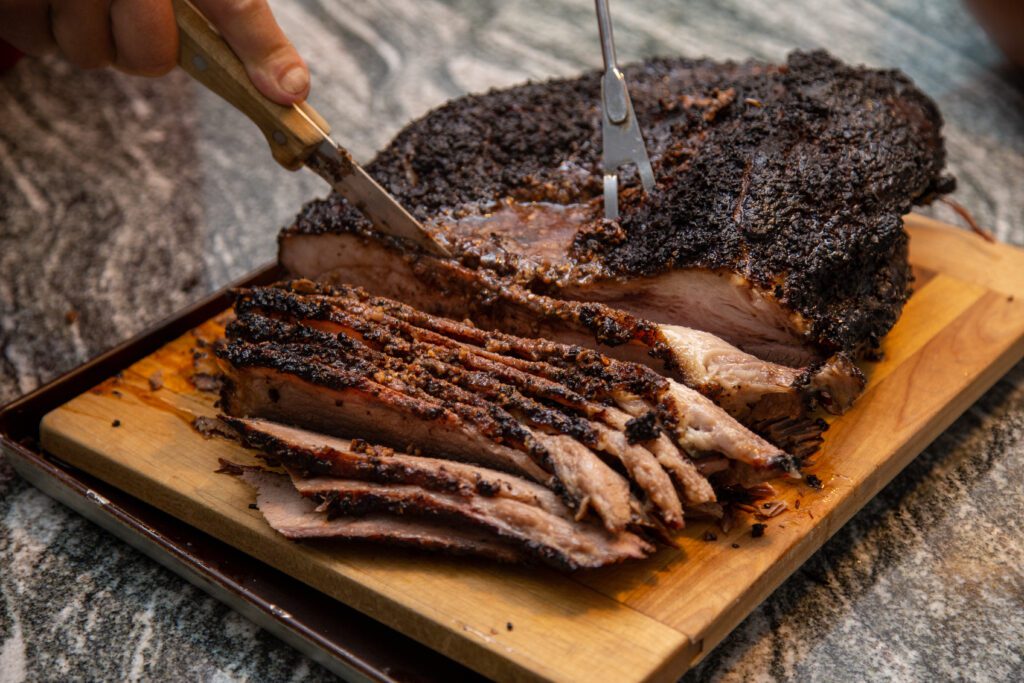
To ensure that your brisket is cooked to perfection, it’s important to test for doneness. There are two primary methods to determine if your brisket is cooked to the desired level. First, you can use a meat thermometer to check the internal temperature of the brisket. The ideal temperature for a fully cooked brisket is around 195-205°F (90-96°C). Insert the thermometer into the thickest part of the meat without touching the bone. If the temperature reaches the desired range, your brisket is done.
In addition to using a thermometer, you can also evaluate the texture and tenderness of the brisket. A properly cooked brisket should be tender and easily pull apart with a fork. If it still feels tough or chewy, it may need more time to cook. You can continue cooking it until it reaches the desired tenderness. Remember to always let the brisket rest for at least 15-30 minutes before slicing, as this allows the juices to redistribute and enhances the flavor. By testing for doneness using these methods, you can avoid the risk of overcooking or undercooking your brisket.
Using Meat Thermometer To Check Brisket Temperature
To ensure that your brisket is cooked to perfection, using a meat thermometer is essential. Insert the thermometer into the thickest part of the meat without touching the bone. The ideal temperature for a fully cooked brisket is around 195-205°F (90-96°C). By checking the internal temperature, you can determine if the brisket is done or if it needs more time. This method allows you to avoid overcooking, ensuring that your brisket remains juicy and tender. Remember to always let the brisket rest before slicing, as this allows the juices to redistribute and enhances the flavor.
Evaluating Brisket Texture And Tenderness
When it comes to evaluating the texture and tenderness of brisket, there are a few key indicators to look for. One of the most common tests is the “probe test.” Take a skewer or meat thermometer and insert it into the thickest part of the brisket. If it goes in with little to no resistance and comes out easily, the brisket is tender and ready to be enjoyed. However, if there is some resistance, it may need more time to cook. It’s important to monitor the texture and tenderness throughout the cooking process to ensure that you don’t overcook your brisket. Remember, a perfectly cooked brisket should be juicy, tender, and easy to slice.
Conclusion And Avoiding BBQ Disasters
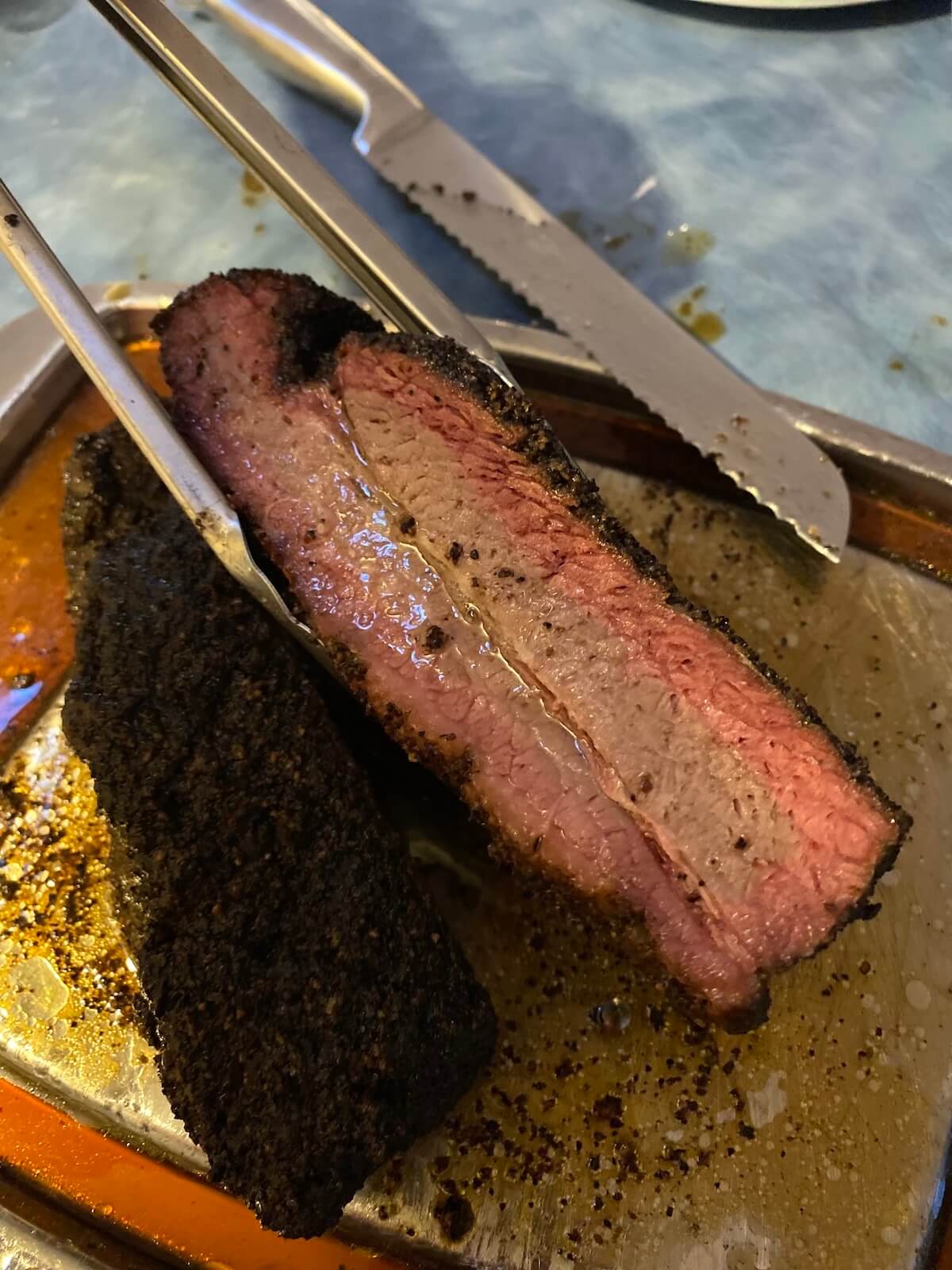
In conclusion, properly cooking a brisket requires careful attention to detail and understanding of the cooking process. By considering factors such as cooking time and temperature, avoiding common mistakes like overcooking or undercooking, and properly preparing the brisket through trimming and seasoning, you can achieve a delicious and tender result. Regularly testing the brisket for doneness using a meat thermometer and evaluating its texture and tenderness will ensure it is cooked to perfection. By following these guidelines, you can avoid BBQ disasters and enjoy a mouthwatering brisket every time.
Summary Of Key Points
In summary, properly cooking a brisket requires attention to detail and understanding of the cooking process. Factors such as cooking time and temperature are crucial. Overcooking can result in dry and tough meat, while undercooking poses risks of bacteria. Properly preparing the brisket through trimming and seasoning helps enhance flavor. Choosing the right wood and smoke level for BBQ adds to the overall taste. Smoking and grilling are the preferred cooking methods. Testing the brisket for doneness using a meat thermometer and evaluating its tenderness ensures it is cooked to perfection. By following these guidelines, BBQ disasters can be avoided and a delicious brisket can be enjoyed.
FAQ About Can You Overcook Brisket: Avoiding BBQ Disasters
Q: What happens if you overcook brisket?
A: Overcooking brisket can result in a tough and dry texture, making it less enjoyable to eat. It is essential to monitor the cooking time and temperature carefully to avoid this.
Q: How can you prevent overcooking brisket?
A: To prevent overcooking brisket, use a meat thermometer to track the internal temperature and remove the brisket from heat once it reaches the desired doneness. Additionally, consider using cooking methods like smoking or braising to retain moisture.
Q: What is the ideal cooking temperature for brisket?
A: The ideal cooking temperature for brisket is around 225-250°F (107-121°C) for a slow and low cooking process that helps break down the tough collagen in the meat, resulting in a tender texture.
Q: How long should you cook brisket?
A: The cooking time for brisket can vary depending on the size and desired doneness. On average, a brisket may take 1.5 to 2 hours per pound to cook at the recommended temperature range, but it is crucial to rely on the meat’s internal temperature for accuracy.
Q: Can you save an overcooked brisket?
A: If you accidentally overcook your brisket, you can try salvaging it by adding moisture back into the meat through techniques like slicing the brisket thinly and reheating it with a flavorful sauce or broth to enhance its tenderness and juiciness.
Q: How can you tell if brisket is overcooked?
A: Overcooked brisket is typically dry, tough, and lacks the desired juiciness and tenderness. Pay attention to the texture and ease of slicing when determining if brisket has been overcooked.

Johnny Knuckles Knock-out BBQ is a culinary haven for barbecue enthusiasts, offering a fusion of traditional BBQ and tantalizing street fare. Our secret to delivering mouthwatering dishes lies in our meticulous preparation process. Each cut of meat is lovingly hand-rubbed and slow-smoked over 100% hardwood, creating a symphony of flavors that will leave your taste buds dancing. Whether planning a special event or simply craving an unforgettable meal, Johnny Knuckles Knock-out BBQ is here to elevate your dining experience. Our catering services are designed to bring the sizzle and aroma of our delectable BBQ to your event, ensuring that every guest leaves with a full belly and a smile.